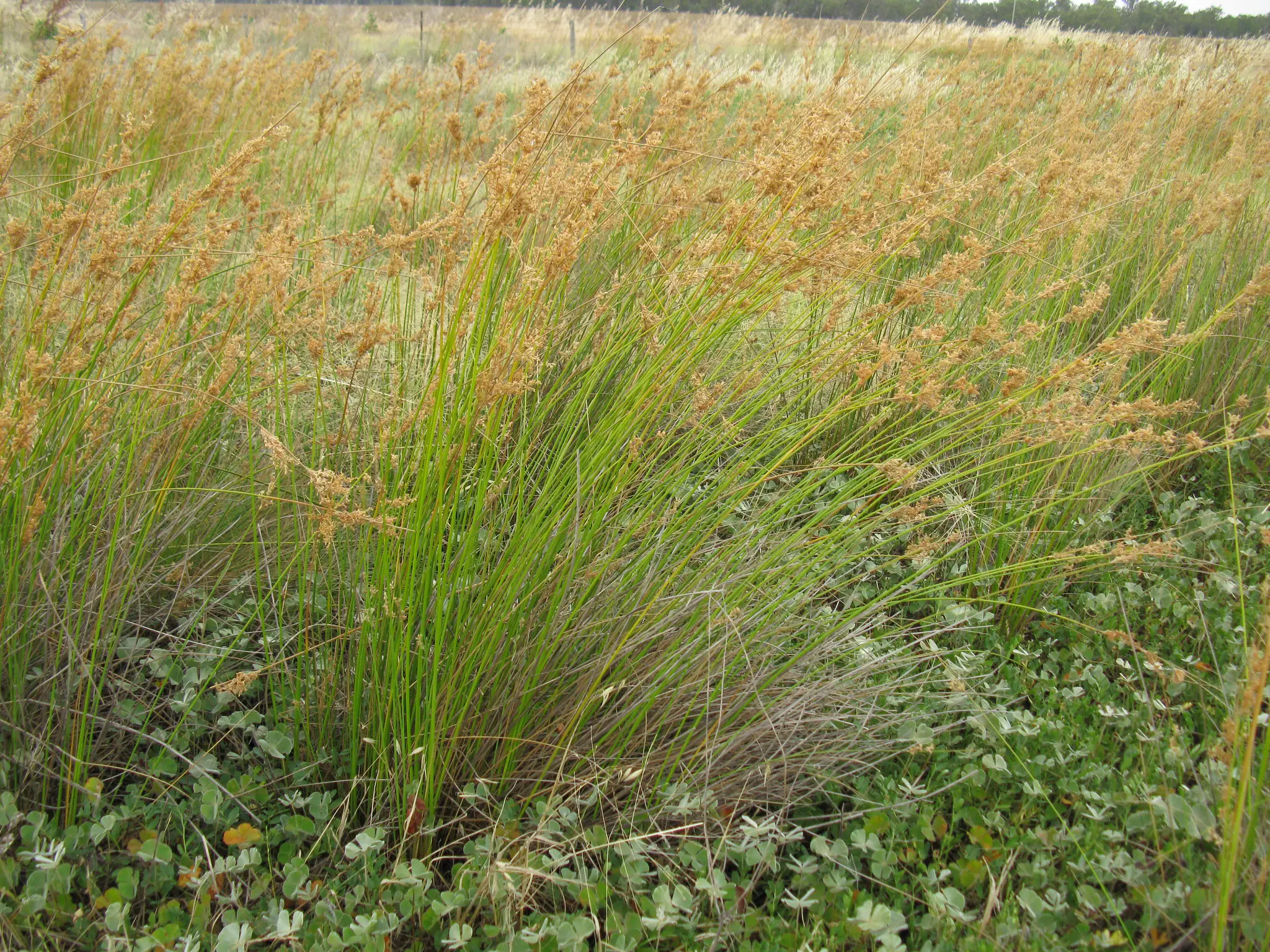

Image – Flickr / Harry Rose // Juncus flavidus
What we know as rush They are a set of plants that are of great importance to humanity, since there are many species that have some use, such as the making of baskets, or roofs.
In addition, they are excellent as garden or terrace plantsbecause although it is true that they do not usually produce very showy flowers, their stems and leaves have a wonderful elegance.
Origin and characteristics of the reeds
Reeds are rhizomatous plants that we find in temperate and warm regions of the world, always near waterways or in humid areas. Their stems are erect or ascending, compressed, and usually have very thin, green leaves. The flowers are grouped in inflorescences called spikeswhich are more or less large depending on the botanical genus and the species to which each particular specimen belongs.
They are, in addition, monocots. This means that when germinating only a single cotyledon sprouts, also called primitive leaf, and that it develops a superficial root system, formed by roots that sprout from the same point.
Main genres
The most frequent are the following:
Cyperus


Image – Wikimedia / Liné1 // Cyperus papyrus
Cyperus are native plants from all over the world, although those from Africa, Asia and Europe are commercialized more for ornamental gardening in Spain. They can reach a height of up to 5 metersand its stems are circular or triangular depending on the species. They bloom during the spring.
Depending on the type, they have various uses. For example, papyrus was used in the time of the pharaohs to make paper (papyrus) and tiger nuts have edible tubers.
Among the best known species we have the Cypress round, Cyperus papyrus, Cyperus alternifolius, Cyperus esculentus, Cyperus longus, Cypress headed y Cyperus eragrostis.
Juncus


Image – Wikimedia Commons / Zeynel Cebeci // sea reed
They are, so to speak, the true reeds. They are found mainly in the Mediterranean basin, but also in America and Africa. They grow to a height of about 90 centimetersand they have elongated, straight and flexible leaves. They bloom in spring-summer.
They have several uses: they are used in basketry, to make ceilings and as low hedges in gardens.
The best known species are the sea reed, Juncus shed, A bent reed, juncus buphonius and jointed reed.
Phragmites


Phragmites australis
Phragmites, known as reeds, are rhizomatous perennials with a cosmopolitan distribution. They grow to a height of about 1 meterwith stems from which elongated leaves sprout. Its flowers are grouped in inflorescences that sprout in spring-summer.
They are used in a traditional way to roof huts.
Among the main species we have Phragmites australis and Phragmites communis.
scissors


Scirpus atrovirens
Scirpus, known as cattails, are annual or perennial plants native to the world. They reach a height of 20 to 90 centimeters. The leaves are with or without a blade, green in color, and the flowers appear during spring.
They are used especially to prevent and / or combat soil erosion, and as medicinal plants.
Among the best known species we have Holocene scurvy, Sea bream and lake scum.
sparganium


Image – Wikimedia Commons / Nonenmac // Sparganium eurycarpus
Asparagus are perennial herbs with a rhizomatous stem that develop simple, flat and elongated green leaves. They grow to a height of 1-2 metersand are found in the temperate to cold regions of the northern hemisphere.
They are used as ornamental plants, and to prevent erosion.
The main species are raised sparganium y Sparganium swimming.
Typha


Typha latifolia
Typha, called cattails, gladios, cattails, eneas or cattails, are plants native to the temperate regions of the northern hemisphere. They reach a height between 1 and 3 meterswith robust stems from which erect, flattened and elongated leaves sprout. The flowers are grouped in not very large inflorescences during spring.
They are used to prevent erosion, as well as ornamental plants in ponds or in pots.
The main species of this genus are the Typha angustifolia, Typha domingensis y Typha latifolia.
Curiosities of the reed
As we have seen, there are many plants known as rush. The truth is that the name we give to plant beings is very good, but when you want to look for information about a specific one, it is much better to know the scientific name, because this, unlike the common, is universal, and therefore just as valid in Spain than in Asia for example.
But if we stay with the common one, and taking into account the number of species that are reeds, there are several curiosities that we invite you to know:
Served as role


Image – Flickr / Eduardo Francisco Vazquez Murillo
The species Cyperus papyrus It was very, very used in Egypt to make paper. All kinds of manuscripts were written on itletters, lists, … everything. Today it is very popular as a garden plant.
They prevent and fight erosion
Although they are herbs, they are quite robust and also dense, so they are very effective when it comes to preventing and / or combating soil erosion. A good way to use them is, for example, by planting a row of reeds bordering the garden Or, if you don’t want everything, just the most vulnerable area.
Some are medicinal


Image – Wikimedia Commons / Tamorlan // Tigernuts
The rhizomes of some reeds, such as the Cyperus esculentus or the Scirpus, they are medicinal. They are collected in autumn-winterand dry in the sun before use.
What do you think of these plants?
